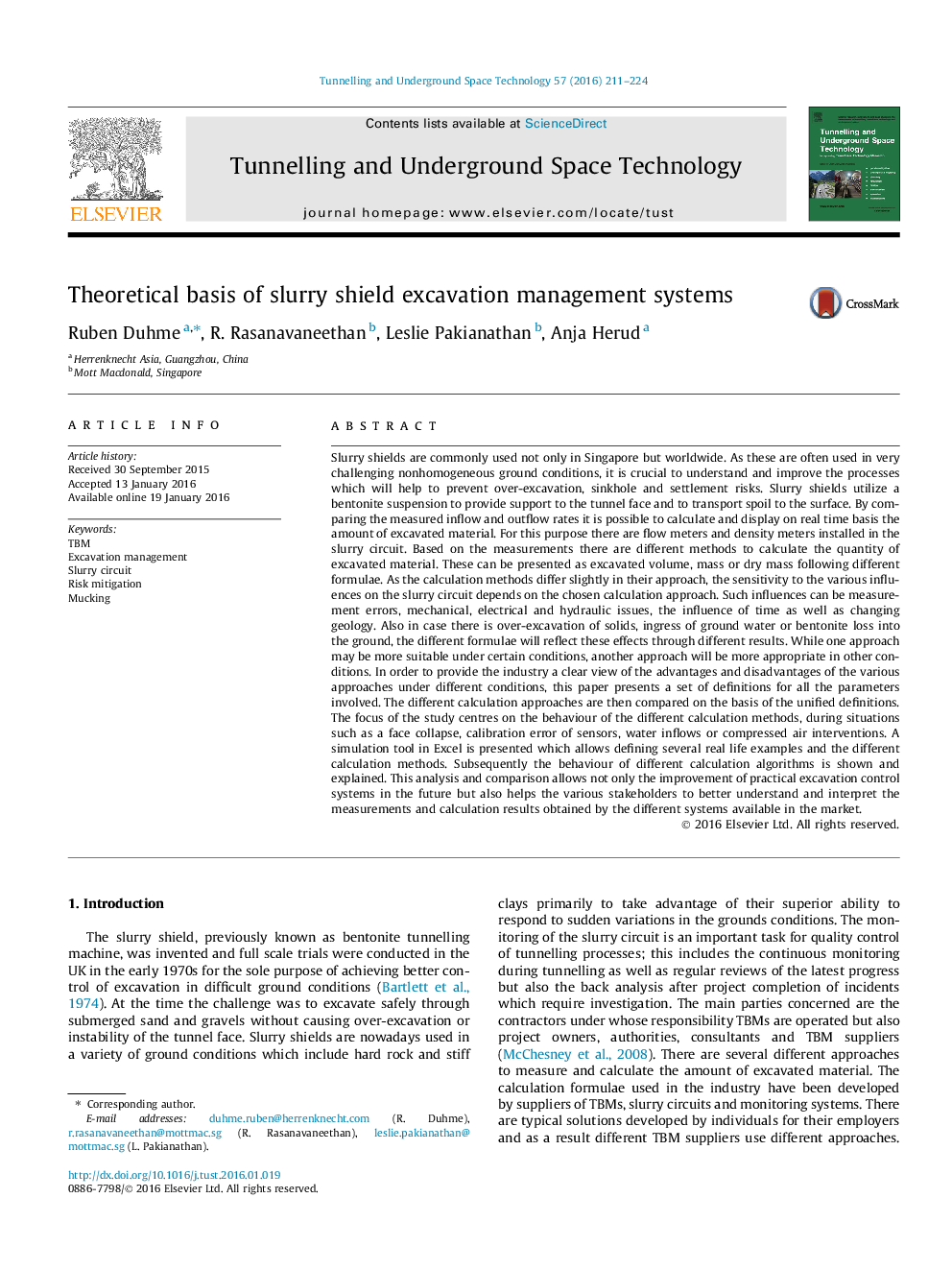| کد مقاله | کد نشریه | سال انتشار | مقاله انگلیسی | نسخه تمام متن |
|---|---|---|---|---|
| 310601 | 533326 | 2016 | 14 صفحه PDF | دانلود رایگان |
Slurry shields are commonly used not only in Singapore but worldwide. As these are often used in very challenging nonhomogeneous ground conditions, it is crucial to understand and improve the processes which will help to prevent over-excavation, sinkhole and settlement risks. Slurry shields utilize a bentonite suspension to provide support to the tunnel face and to transport spoil to the surface. By comparing the measured inflow and outflow rates it is possible to calculate and display on real time basis the amount of excavated material. For this purpose there are flow meters and density meters installed in the slurry circuit. Based on the measurements there are different methods to calculate the quantity of excavated material. These can be presented as excavated volume, mass or dry mass following different formulae. As the calculation methods differ slightly in their approach, the sensitivity to the various influences on the slurry circuit depends on the chosen calculation approach. Such influences can be measurement errors, mechanical, electrical and hydraulic issues, the influence of time as well as changing geology. Also in case there is over-excavation of solids, ingress of ground water or bentonite loss into the ground, the different formulae will reflect these effects through different results. While one approach may be more suitable under certain conditions, another approach will be more appropriate in other conditions. In order to provide the industry a clear view of the advantages and disadvantages of the various approaches under different conditions, this paper presents a set of definitions for all the parameters involved. The different calculation approaches are then compared on the basis of the unified definitions. The focus of the study centres on the behaviour of the different calculation methods, during situations such as a face collapse, calibration error of sensors, water inflows or compressed air interventions. A simulation tool in Excel is presented which allows defining several real life examples and the different calculation methods. Subsequently the behaviour of different calculation algorithms is shown and explained. This analysis and comparison allows not only the improvement of practical excavation control systems in the future but also helps the various stakeholders to better understand and interpret the measurements and calculation results obtained by the different systems available in the market.
Journal: Tunnelling and Underground Space Technology - Volume 57, August 2016, Pages 211–224
